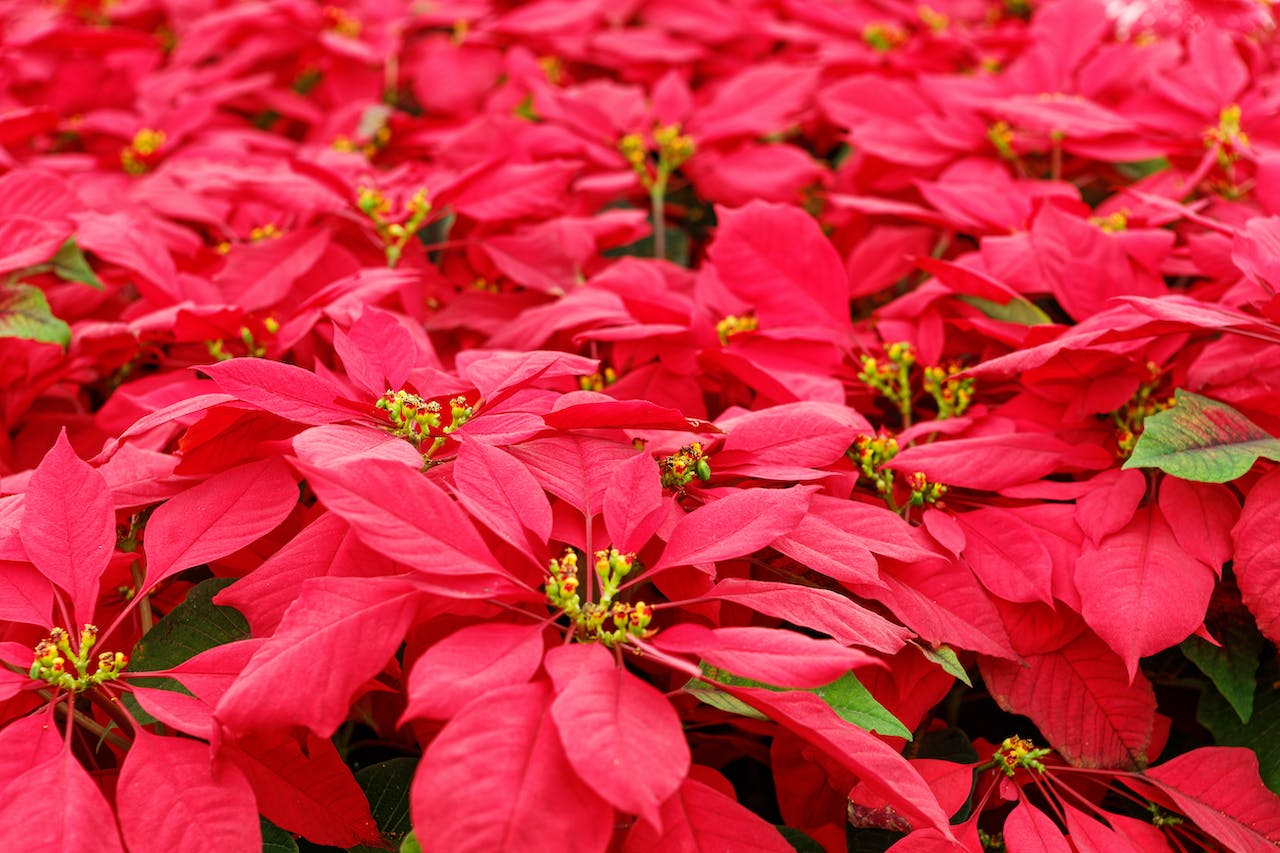The Ecke family, based in Encinitas, California, revolutionized the poinsettia industry in the early 20th century. By pioneering a grafting method, they created lush, compact plants that stood out starkly against the spindlier versions on the market. This innovation secured their dominance in the poinsettia market, where at one point, they controlled an astounding 90% of U.S. sales and 50% globally.
In the 1990s, the family’s secret grafting technique was exposed by a university researcher, leading to increased competition in the market. Despite this, the Eckes maintained a significant share, boasting around 70% of U.S. sales and 50% internationally.
Cal State San Marcos has played a pivotal role in preserving the Ecke legacy. In 2013, the Paul Ecke Ranch, Inc. archives became the university’s first special collection. Over the years, the collection has evolved to illustrate the Ecke family’s impact on regional history, agriculture, and how we celebrate Christmas. The story of the poinsettia as a Christmas staple is inseparable from the Ecke family, especially Paul Ecke Sr., who transformed it into a seasonal tradition. This connection is not just a tale of agriculture but of astute marketing and cultural influence.
The Ecke’s embraced innovation, from grafting techniques to resilience testing in a “torture chamber” to ensure only the hardiest plants were sold. They also adapted their business model, shifting from selling cut flowers to potted plants, and eventually, to providing stock plants and cuttings to other growers, facilitating nationwide expansion.
Paul Ecke Sr.’s decision to relocate his farm to Encinitas was strategic, foreseeing the potential growth of the area. His focus was on building a business that could withstand the test of time, illustrated by his commitment to innovation, customer service, and establishing long-term relationships.
A key principle of the Ecke business philosophy was honesty. The family was known for their fair dealings, whether it was paying rightful royalties to breeders or safeguarding the belongings of Japanese farmers during World War II.
The Global Poinsettia Market and the Ecke Family Dominance
The poinsettia market witnesses a staggering annual sales volume, with about 70 million plants sold in the United States alone during the Christmas season. The Ecke family, recognized for their cultivation and sales of poinsettias, remarkably serves half of the worldwide market and an impressive 70 percent of the US market. This dominance by the Ecke Ranch showcases the impact of agricultural innovation and marketing strategies in horticulture. It underscores how a family-owned business can shape global trends and consumption patterns of a festive plant like the poinsettia, transforming it into a seasonal staple.
While poinsettias are intrinsically tied to Christmas traditions due to their religious symbolism and seasonal blooming, their overwhelming popularity is also a testament to successful marketing strategies. The Ecke family’s influence has turned a plant with modest beginnings into a cultural icon, known as the Christmas Star or Christmas Flower. This case study highlights the interplay between tradition, religion, and commerce. It raises intriguing questions about how specific plants acquire cultural significance and how businesses can capitalize on and contribute to these cultural narratives.
The poinsettia, beyond its traditional red, now blooms in over 100 varieties, boasting an array of colors such as white, orange, and purple. This diversification is largely attributed to horticultural advancements and selective breeding, areas where the Ecke family has been notably influential. Exploring the horticultural techniques and the scientific journey of creating new varieties can shed light on the industry’s ability to adapt to consumer preferences and the constant pursuit of botanical variety and vigor. It can provide a detailed look at how plant breeding has changed the landscape of commercial horticulture and the implications for biodiversity and sustainability within the industry.
Market Monopoly and Consumer Choice
The domination of the poinsettia market by the Ecke family raises questions about market monopoly and its effects on consumer choice. With such a significant market share, there is a debate about whether this level of control stifles innovation from smaller breeders and growers who may not be able to compete on the same scale. Critics argue that this could lead to a lack of diversity in the types of poinsettias available to consumers, as dominant players may prioritize certain varieties over others. Proponents, however, may assert that the Ecke family’s dominance is a result of superior quality and breeding techniques, which benefits consumers by providing the best product available.
The concentration on commercial breeding by the Ecke family also brings to light the issue of genetic diversity within the poinsettia species. With the focus on developing varieties that are most likely to sell during the Christmas season, there is concern that less commercially viable, but genetically important, varieties may be neglected. This could potentially lead to a decrease in the overall genetic pool of poinsettias, making them more vulnerable to diseases and pests. There is a debate about the long-term sustainability of poinsettias if diversity is not maintained and the potential repercussions for ecosystems that rely on a variety of plant species.
The propagation methods used by large-scale growers like the Ecke family also present ethical considerations. For instance, the use of patented propagation methods and genetic engineering in plants raises questions about ownership and control over living organisms. Some argue that patenting living things, including plants, can lead to ethical and legal dilemmas, restricting the sharing of biodiversity and benefiting only a few. Others may counter that patents are necessary to protect the investment in research and development that leads to new, improved varieties.
Mass production of poinsettias by a single entity like the Ecke family also puts the spotlight on the environmental impact of such practices. Large-scale agricultural operations often require significant resources in terms of water, pesticides, and fertilizers, which could contribute to environmental degradation. There is a debate over the sustainability of producing poinsettias on such a scale and the responsibility of major growers to implement eco-friendly practices. Meanwhile, advocates of large-scale production may argue that efficiencies of scale can actually lead to less overall environmental impact per plant produced.

Cultural Homogenization and Globalization of Poinsettias
Finally, the widespread sale of poinsettias by the Ecke family reflects a broader concern about cultural homogenization in the age of globalization. As poinsettias have become synonymous with Christmas around the world, there is a conversation to be had about how global trade practices influence and possibly dilute regional cultural practices and plant species. The spread of the poinsettia as a global Christmas symbol, heavily influenced by Western traditions, may overshadow local flora that have traditionally held seasonal significance in various cultures. This discussion extends beyond poinsettias to the larger implications of globalization on cultural identity and biodiversity.
We invite you to share your own experiences and views. Do you opt for poinsettias during the holiday season, or do you prefer alternative plants that may be more reflective of your local traditions? Have environmental considerations influenced your holiday decorations? Your insights enrich this discussion, so please, share this article with others, comment with your thoughts, and let’s continue this meaningful conversation.





